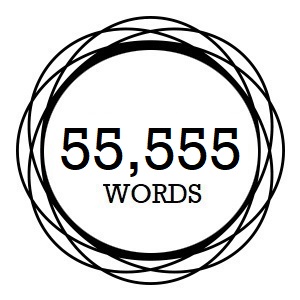55,555
 To write a novel, you need to write regularly – again, as I wrote last week, everybody has to devise their own methodology. The only qualifier is that it has to be productive.
To write a novel, you need to write regularly – again, as I wrote last week, everybody has to devise their own methodology. The only qualifier is that it has to be productive.
How do you know if your schedule is productive? Well, I think certain symptoms appear when you don’t write enough:
- you lose interest in your story
- you struggle to remember what you were going to do next
- you have to go back over what you have done to remember what you’ve written
- it feels like some indecipherable mess
- it all seems too hard.
Writing a novel is like rehabbing an injury – when you don’t rehab it, it not only doesn’t get better, but can get worse and be harder to rehab when you finally do get around to trying. But when you rehab regularly, there’s some pain, but there’s also progress more often than not.
When you do write regularly, you:
- look forward to getting back to your story
- see how the story is going to unfold
- find your mind is always – regardless of where you are or what you’re doing – considering what comes next
- feel a sense of accomplishment as the story takes form
- look forward to getting back into it.
I started TFSoLY on 26th March – just shy of four months ago. I now sit at 55,555 words. During that time, I’ve had sessions where I’ve either done very little, or I’ve gone backwards because I’ve cut scenes. But I’ve sat at the computer, every day – even if it was only for fifteen minutes, just to keep connected to the story.
Approaching 50,000 words was the first time I became truly aware of the word count – given I’ve had some difficulty in developing this story (and I have a list of bullet-points of things I know I’ll need to address in revision), I was delightfully surprised that I had written so much. Early on, I was privately worried that I wouldn’t be able to sustain this story through a novel.
One of the simplest way to keep momentum going (other than to write) is to keep a word count chart.
This is a simple spreadsheet with just four columns:
- first column: the date
- second column: how many words I’ve written that day
- third column: my total word count
- fourth column: any notes from that writing session.
This is an easy way of tracking my progress, as well as motivating myself. If I’ve had a session where I haven’t written much – either because I’ve struggled to find where the story goes next, or simply because I’ve procrastinated (damn you, internet!) – I feel motivated to make sure I atone in the next session. Also, as I see that total word count build, there’s a sense of gratification that something is growing from all these words I’m throwing on the page. That motivates me more. It then becomes a cycle.
While the first, second, and third column are all self-explanatory, in the third column I’ll list any genuine reason I might’ve struggled that day, or if a particular session was heavy on cutting (I’ll mark any excisions in its own row, and colour it red) or revision.
But that’s just a device, a physical means to chart my momentum and sustain it.
Otherwise, as I said last week, it still comes down to one thing: write.
Last Week’s Lie: I said I hadn’t written that blog to bignote myself. Of course I was bignoting myself.
